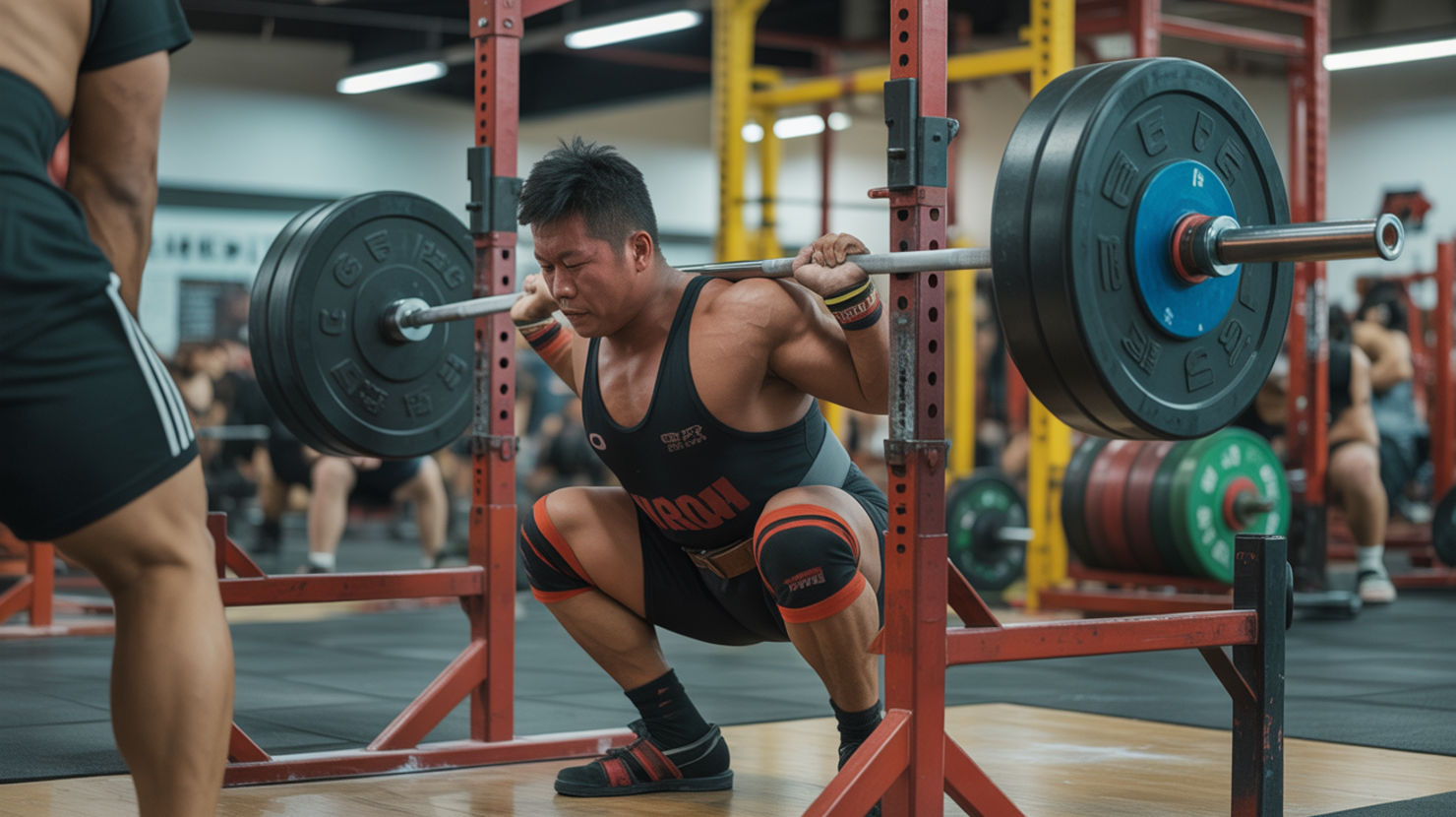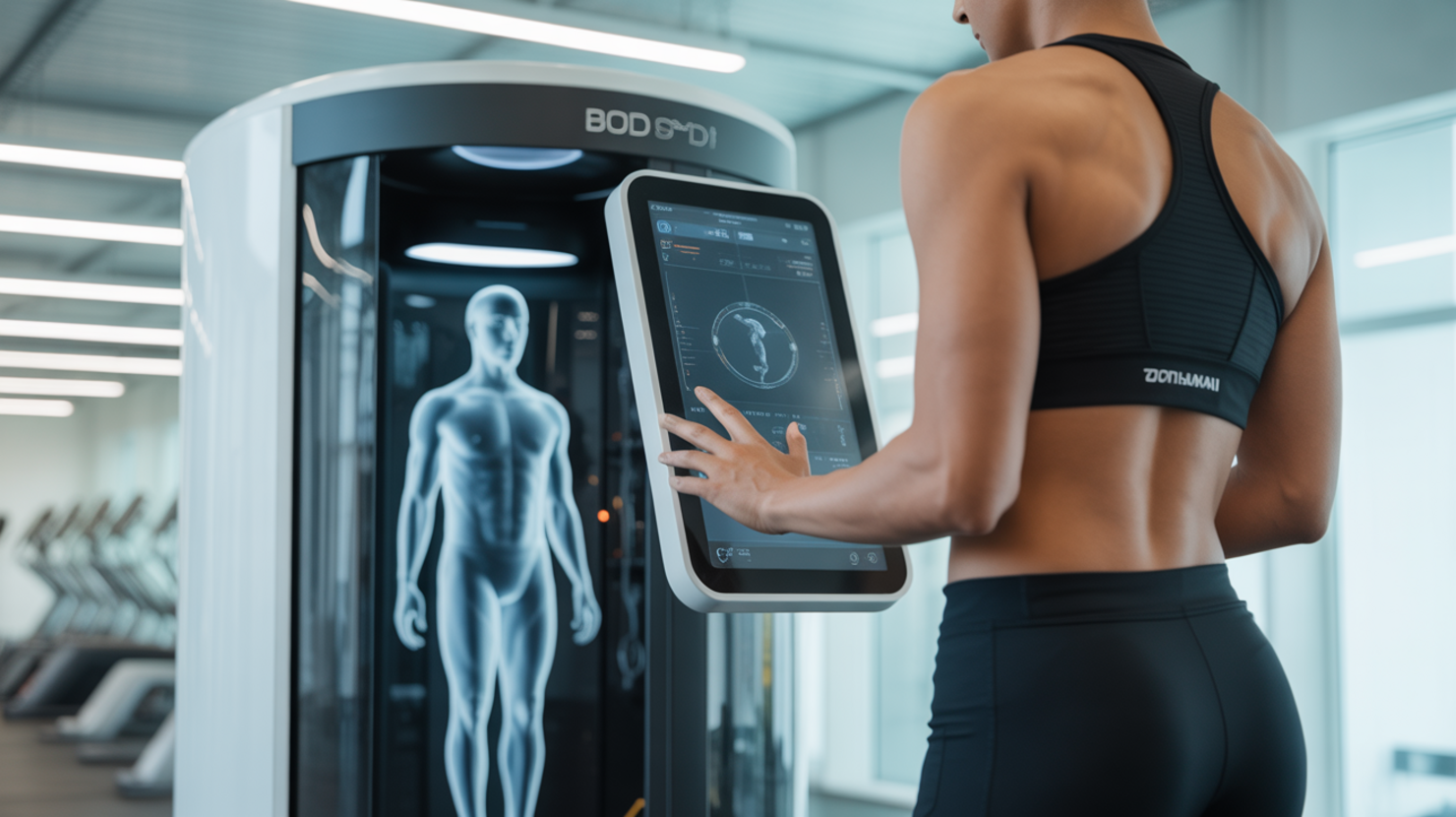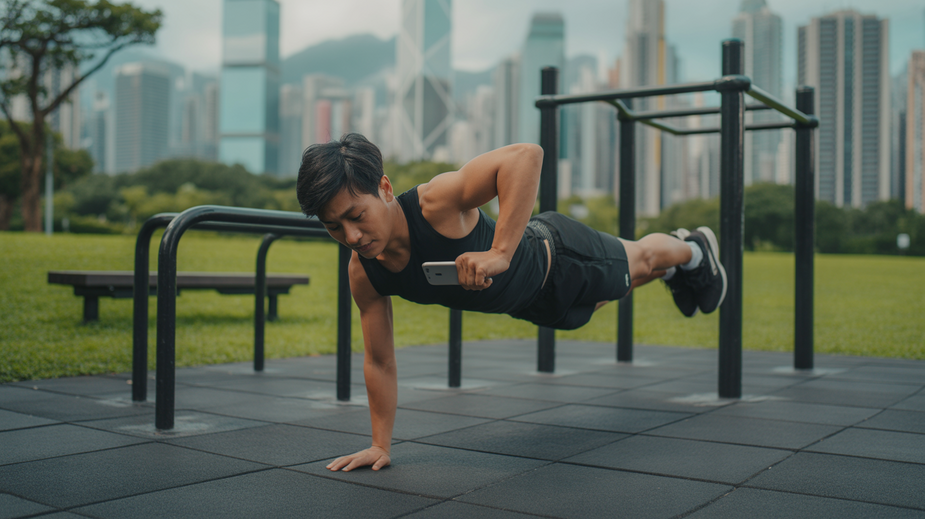The landscape of outdoor fitness is undergoing a dramatic transformation, largely thanks to the integration of cutting-edge technology, particularly Augmented Reality (AR). Traditionally, public parks were equipped with static bars, benches, and open spaces for exercise. While effective, they lacked the dynamic engagement many now seek in their fitness routines. AR is stepping in to reimagine how we interact with these familiar environments, turning simple park equipment into interactive elements of a digital workout experience.
Cities around the globe are recognizing the potential of their existing public spaces. In places like Hong Kong, with its extensive network of public parks and recreational facilities, the infrastructure is ripe to become a digital canvas for these technological innovations. Imagine a standard pull-up bar or a park bench becoming a trigger point for an AR challenge or a guided exercise routine visible only through your smartphone or AR glasses. This approach leverages existing city assets, transforming them into smart outdoor gyms without requiring significant physical alterations.
This new wave of fitness technology is all about blending physical exertion with engaging digital gamification. It’s no longer just about doing reps; it’s about completing virtual challenges, competing for leaderboards (even locally within a park), earning badges, and following interactive virtual coaches. This makes workouts more motivating, consistent, and fun. By overlaying digital layers onto the real world, AR calisthenics apps create an immersive experience that encourages people to step outside, explore their local parks, and engage in physical activity in entirely new and exciting ways. This fusion of the physical and digital is paving the way for a more accessible and appealing future for urban fitness.
Solving Urban Fitness Accessibility Challenges 🏙️
Cities like Hong Kong, with their dense populations and soaring property prices, face significant challenges when it comes to fitness accessibility. Finding affordable space for physical activity is a constant struggle, often leaving residents with limited options beyond expensive gym memberships. This urban environment can inadvertently contribute to increasingly sedentary lifestyles. However, innovative AR-powered calisthenics apps are emerging as a powerful solution, directly addressing these urban hurdles.
One major barrier is overcoming space constraints. While building new gyms is often infeasible or prohibitively expensive, Hong Kong boasts numerous public parks and open spaces. These apps transform these existing locations into dynamic workout zones. By overlaying digital instructions, visual cues, and interactive elements onto the real-world view through a smartphone camera, the apps allow users to utilize park benches, railings, and even steps as sophisticated fitness equipment. This effectively maximizes the utility of public space without requiring dedicated, expensive infrastructure.
Another significant hurdle is the cost of fitness. Traditional gyms often require costly gym memberships that are simply out of reach for many residents. AR calisthenics apps, typically available for free or at a minimal cost, paired with the freely accessible public parks, offer a highly affordable alternative. This approach effectively democratizes fitness, making structured workouts and expert guidance available to everyone, regardless of their economic background. It removes a major financial barrier to maintaining a healthy lifestyle.
Finally, combating sedentary lifestyles in a bustling urban environment is crucial. These apps incorporate features designed to motivate users to get moving. By utilizing location-based triggers, the apps can notify users when they are near a suitable park or even unlock specific challenges or guided workouts tied to that particular location. This gamification and contextual prompting encourage people to step outside, engage with their local environment, and turn commuting or errands into opportunities for physical activity, breaking the cycle of inactivity often associated with urban living. Read more about the benefits of physical activity. This blend of technology and public space is creating new pathways to wellness for city dwellers.
Core Mechanics of AR Calisthenics Apps ⚙️
Modern Augmented Reality (AR) calisthenics apps are more than just simple workout timers; they employ sophisticated core mechanics to deliver a truly interactive and adaptive fitness experience, especially in dynamic environments like public parks. Understanding these underlying processes helps appreciate how these apps transform ordinary spaces into personalized training grounds.
A fundamental element is real-time body tracking, typically achieved through the smartphone’s camera and advanced computer vision algorithms. By analyzing video streams, the app can accurately identify the user’s body position, joint angles, and movement patterns. This allows for precise feedback on exercise form, counting repetitions accurately, and even detecting if a movement is completed correctly. Imagine performing exercises like push-ups or pull-ups; the app visually guides or confirms reps based on your live performance, boosting effectiveness. This forms a basis for progress tracking and safety.
Beyond just tracking the user, these apps also leverage environmental object recognition. Using the camera and sometimes device sensors, the app can identify elements within the park landscape – benches, railings, walls, or even steps. Instead of generic exercises, the app suggests or integrates movements using nearby park equipment – benches, railings, or stairs. This makes the workout highly relevant to immediate surroundings and adds variety. This capability is crucial for customizing workouts and making efficient use of available public infrastructure.
Furthermore, a key feature for keeping users challenged and motivated is dynamic difficulty adjustment. Monitoring metrics like completion time, consistency, and range of motion, the app uses this real-time data to automatically modify workout intensity. This might mean increasing reps, suggesting tougher exercise variations, or adjusting rest times. This ensures the workout remains appropriately challenging as the user gets fitter, preventing plateaus and providing a truly adaptive training program without requiring manual input. These core mechanics work in tandem to create an intelligent, responsive, and engaging fitness session, maximizing the potential of outdoor spaces.
Signature Features of Leading Apps ✨
While the core mechanics provide the foundation, the true innovation of leading AR calisthenics apps lies in their signature features. These elements leverage technology not just to track exercise, but to actively enhance, guide, and gamify the fitness experience within Hong Kong’s public parks, transforming them into genuinely smart training zones.
One pivotal feature is AI-powered form correction. Utilizing the smartphone’s camera and sophisticated motion sensors, the app acts as a vigilant virtual coach. As you perform exercises like squats, pull-ups, or push-ups, the AI analyzes your body’s posture and movement in real-time. If your form deviates from the optimal technique, immediate visual or audio feedback is provided. This ensures you perform exercises correctly, maximizing effectiveness and significantly reducing the risk of injury during your park workout sessions.
Imagine your familiar local park transformed into a dynamic training ground. This is the promise of Augmented Reality obstacle courses. These apps overlay digital challenges and waypoints onto the real-world view through your phone screen. You might follow a virtual path, find hidden digital markers at specific park benches or bars, or complete timed tasks integrated with the physical environment. It turns exploring and utilizing park infrastructure into an interactive, engaging workout challenge.
Adding a layer of compelling gamification, leading apps incorporate geo-specific achievement badges. Completing designated workout circuits, mastering challenges within a particular park, or achieving fitness milestones in specific districts of Hong Kong can earn you unique digital badges. This feature encourages users to explore different public spaces, provides tangible (though digital) rewards for effort, and adds a fun collection or competition element to their fitness journey, rooting achievements in real-world locations.
These signature features move beyond simple workout tracking, creating rich, interactive, and guided fitness experiences that are deeply integrated with the urban environment, making public parks more engaging for calisthenics enthusiasts.
Social Fitness Revolution in Public Spaces 🤝
Beyond the focus on individual exercise technique and tracking, AR-powered calisthenics apps are fundamentally changing the social dynamic of fitness in Hong Kong’s public parks. They are transforming potentially solitary workouts into vibrant, shared experiences, cultivating a true social fitness revolution that leverages technology to connect users in innovative ways.
A cornerstone of this shift is the introduction of multi-user AR challenges. Imagine stepping into a park and being able to instantly join friends, or even encounter fellow fitness enthusiasts nearby, to participate in collaborative goals or head-to-head competitions overlaid onto the physical environment. These challenges could range from synchronized squat contests or timed agility courses to team-based circuits utilizing various park equipment. This fusion of physical activity with interactive digital gameplay fosters camaraderie and friendly rivalry, making exercising together more engaging and fun.
Adding a powerful layer of motivation and engagement are the live leaderboards. These systems track and display real-time performance metrics, such as rep counts, calories burned in a session, or points accumulated during specific challenges, allowing users to see how they measure up against a broader community. Whether comparing progress with friends or competing for top spots within a district-wide ranking, these leaderboards inject a healthy dose of competition. This feature is a prime example of how gamification principles are effectively applied to drive consistent participation and encourage users to push their limits.
Furthermore, these platforms are building community through empowering users to contribute their own content via a user-generated workout routes sharing system. Users can design and map out unique exercise paths that highlight specific park features, create challenging circuits using available equipment, or even plot scenic routes for an augmented run or walk. Sharing these routes allows others to discover new workout ideas, explore different parks, and benefit from the collective knowledge and creativity of the community. This feature transforms users from passive consumers into active contributors, strengthening the platform’s value and fostering a sense of shared ownership.
Together, these interconnected social features – multi-user AR challenges, live leaderboards, and the shared content system – are redefining public park fitness. They are not just providing digital guidance but actively building a connected, motivated community that thrives on shared goals, friendly competition, and mutual support within the urban landscape.
Data-Driven Health Impact Analysis 📊
Modern fitness apps, especially those leveraging technologies like Augmented Reality, go beyond simply guiding users through workouts. They are becoming invaluable sources of aggregated data that can offer profound insights into the health and activity levels of an urban population. By collecting and analyzing usage patterns, these platforms provide a powerful, data-driven lens through which public health trends can be observed and understood. This shift transforms physical activity from an individual pursuit into a measurable community phenomenon.
One key insight derived from AR calisthenics apps is the ability to track city-wide fitness participation rates. The data logs when and where users are active, the types of exercises they perform, and the duration of their sessions across different parks and districts. This granular information allows health authorities and city planners to see which areas are most engaged, identify demographics that might be less active, and understand how factors like park accessibility or time of day influence physical activity. This level of detail is unprecedented compared to traditional survey methods and enables more targeted health promotion efforts.
Beyond just participation, the true impact potential lies in correlating app usage with public health metrics. When anonymized and aggregated app data is compared against existing health statistics – such as local obesity rates, prevalence of chronic diseases linked to inactivity, or even healthcare utilization data – powerful correlations can emerge. For example, areas showing high engagement with AR fitness apps might concurrently report lower rates of certain lifestyle-related health issues. This linkage provides compelling evidence for the effectiveness of promoting physical activity through accessible, engaging means.
Consider the potential correlation:
| Public Health Metric | Trend in High-Usage Areas | Trend in Low-Usage Areas |
|---|---|---|
| Obesity Rates | Lower / Decreasing | Higher / Increasing |
| Incidence of Type 2 Diabetes | Lower | Higher |
Ultimately, fostering increased physical activity through engaging platforms like AR calisthenics apps contributes directly to reducing healthcare costs through preventive exercise. By helping people stay active and healthy, these technologies can mitigate the risk factors for numerous expensive-to-treat conditions. A healthier population means fewer hospital visits, reduced reliance on medication, and lower overall burdens on the healthcare system. This preventive approach, informed by the data generated from app usage, offers a sustainable path towards improving community well-being and economic efficiency. Learning more about the benefits of physical activity can be found on resources like the World Health Organization website.
This data-driven approach provides concrete evidence of the public health benefits stemming from investments in technology-enhanced outdoor spaces, making a strong case for continued development and integration of such solutions in urban environments.
Next-Gen Urban Wellness Ecosystems 🌱
Looking ahead, the integration of AR-powered calisthenics apps within Hong Kong’s public parks is just one piece of a larger vision: the creation of sophisticated urban wellness ecosystems. These systems go beyond simple fitness tracking, aiming to weave health and activity seamlessly into the fabric of city life, transforming public spaces into interactive hubs for well-being.
A key aspect of this evolution is the direct integration of AR fitness with broader smart city initiatives. Imagine workout data from park sessions contributing anonymized insights to urban planning, helping identify areas needing more fitness infrastructure or guiding resource allocation. By connecting personal activity with city-level data platforms, these apps can become valuable tools for public health officials and urban designers alike, creating a more responsive and health-conscious urban environment. Learn more about smart city concepts at https://smartcity.org/.
The physical infrastructure of parks is also poised for transformation. The future might see the deployment of 3D-printed outdoor equipment with embedded sensors. This isn’t just about durable, potentially customized structures; it’s about equipment that communicates. Sensors could track usage patterns, measure force applied during exercises, or even provide real-time feedback directly to the AR app, enhancing the workout experience and gathering valuable data for maintenance and planning. This creates a dynamic link between the digital fitness layer and the physical park environment.
Crucially, sustaining these advanced systems while ensuring free public access requires innovative monetization models. These won’t rely on charging users to enter parks or use basic fitness features. Instead, models could include partnerships with health and wellness brands, anonymized aggregated data licensing for research or urban planning (without compromising individual privacy), or offering premium AR features like personalized coaching or advanced challenges for a subscription. The goal is to create a sustainable financial loop that supports the continuous development and accessibility of the AR fitness ecosystem for all citizens.
Ultimately, these next-generation systems represent a powerful convergence of technology, urban design, and public health, pushing the boundaries of how cities can actively promote the well-being of their residents by turning every park visit into a potential step towards a healthier life.











